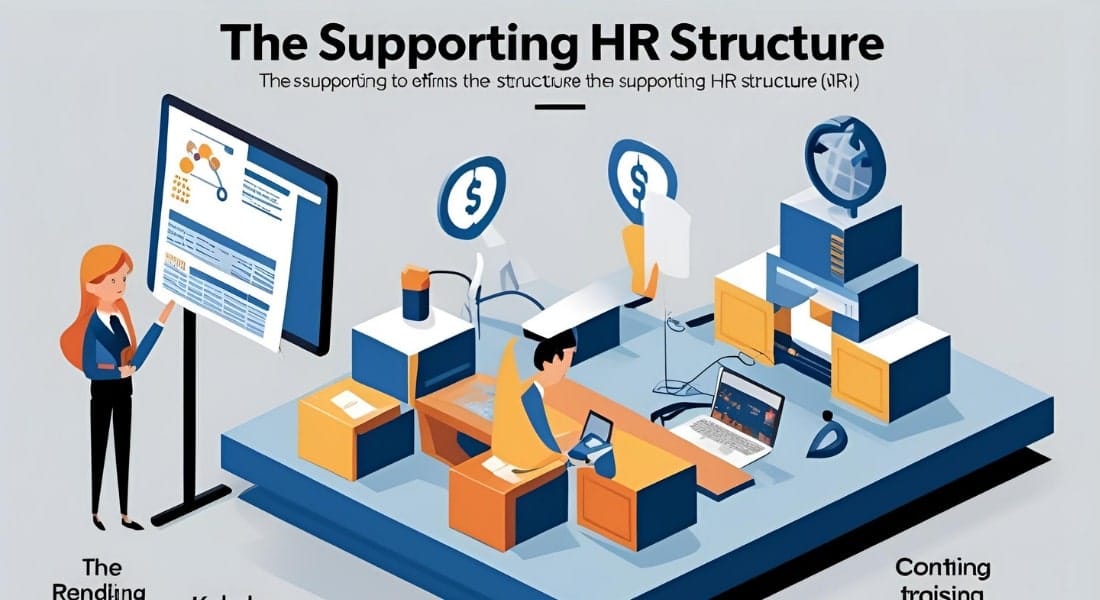The post-pandemic workplace is grappling with unprecedented levels of burnout, stress, and disengagement. Employees are demanding more than token wellness perks—they want meaningful support for their mental health. While Employee Assistance Programs (EAPs) remain a useful foundation, they are no longer sufficient on their own. Today’s companies need HR leaders who treat mental health and wellness as a business-critical priority, not a side initiative. The next generation of HR leadership must go beyond administering benefits to strategically designing cultures of well-being. This article offers a roadmap for finding and vetting candidates who can deliver on that promise.
The Strategic Case for a Wellness-Focused HR Leader
It’s a Business Imperative, Not Just a Moral One
The financial impact of burnout is staggering. Research consistently shows that workplace stress contributes to increased absenteeism, higher turnover, and elevated healthcare costs. The World Health Organization estimates that depression and anxiety cost the global economy over $1 trillion in lost productivity annually. For organizations, this means lost revenue, weaker performance, and higher recruiting expenses. An HR leader who can address mental health challenges isn’t just “nice to have”—they directly influence profitability and sustainability.
A Competitive Differentiator for Talent
Workplace wellness has become a deciding factor in talent attraction and retention. Gen Z and Millennials, in particular, are vocal about prioritizing employers who actively support mental health. According to a Deloitte survey, nearly half of Gen Z workers say they have left a job due to mental health concerns. Companies with proactive wellness strategies stand out as employers of choice, while those that neglect mental health risk losing their best people to competitors who take it seriously.
Building a Resilient and Productive Workforce
A healthy workforce is a high-performing one. When employees feel psychologically safe, supported, and balanced, they bring greater focus, creativity, and resilience to their work. Teams are more adaptable during periods of change, less prone to conflict, and better positioned to deliver sustained results. An HR leader with expertise in wellness doesn’t just prevent burnout—they build organizational capacity for long-term success. In today’s competitive environment, resilience is not a luxury; it’s a requirement.
Interview Questions That Reveal Real-World Experience

Hiring an HR leader with genuine expertise in mental health and wellness requires digging deeper than surface-level statements about “caring for employees.” The right interview questions can separate seasoned strategists from well-intentioned administrators. Here are four powerful questions—and what to listen for in the answers.
Question 1: “Tell me about a time you launched a mental health or wellness program from scratch. What was the business problem you were solving, what did the program look like, and how did you measure its success?”
Purpose: This question tests whether the candidate has built a program, not just maintained one. It reveals their ability to link wellness to business outcomes.
What to look for: Strong candidates will describe initiatives that go beyond a standard EAP—such as manager training, flexible work arrangements, or comprehensive mental health benefits. They should speak about measuring outcomes, like reduced turnover, higher engagement scores, or improved productivity, not just participation rates.
Question 2: “How would you handle a situation where a key executive is exhibiting signs of burnout and it’s impacting their team’s performance?”
Purpose: This evaluates emotional intelligence and ability to navigate sensitive, high-stakes issues at the leadership level.
What to look for: The best answers will describe a multi-pronged approach: initiating a private, empathetic conversation with the executive, offering tailored resources, and simultaneously supporting the impacted team. Look for candidates who frame mental health as a business performance issue, not just an individual problem.
Question 3: “Beyond just offering a subscription to a meditation app, how would you integrate a culture of wellness into the daily life of our company?”
Purpose: This helps you see whether the candidate can drive cultural transformation rather than superficial perks.
What to look for: Look for responses that emphasize structural and cultural shifts: clear boundaries around work hours, mental health training for managers, or company-wide campaigns normalizing conversations about well-being. Candidates who talk about embedding wellness into performance management or leadership expectations demonstrate a deeper, systemic view.
Question 4: “Describe your experience using data (e.g., engagement surveys, benefits utilization data, turnover rates) to make a business case for a mental health program.”
Purpose: This assesses whether the candidate can “speak the language of the C-suite” and connect wellness initiatives to ROI.
What to look for: Ideal candidates will give concrete examples of using data to justify budgets or programs. For example, analyzing benefits utilization to identify gaps, then proposing targeted communication campaigns. A strong leader will show how they linked interventions to measurable improvements in retention, productivity, or healthcare spending.
Asking these questions ensures you’re hiring not just someone who cares about wellness, but someone who can lead it strategically, drive culture change, and prove its business impact.
The Supporting HR Structure
Even the most skilled HR leader cannot build a wellness culture alone. Success requires a supporting structure. HR business partners and generalists must be trained to recognize wellness issues and serve as trusted advisors to managers. Additionally, executive sponsorship is non-negotiable—the CEO must champion mental health initiatives visibly and consistently. When wellness is modeled from the top and reinforced across HR touchpoints, programs shift from being “extra perks” to becoming part of the company’s DNA. Without this alignment, even the best HR leader will struggle to move beyond isolated initiatives.

Conclusion
The HR leader of the future is more than a benefits administrator. They are a strategic architect of a workplace where mental health and wellness drive engagement, resilience, and performance. Companies that recognize this shift gain an undeniable advantage in both talent and business outcomes. By asking the right questions, building the right support structures, and ensuring top-down commitment, organizations can find leaders who turn wellness from a checkbox into a competitive advantage. Investing in this kind of HR leadership isn’t just compassionate—it’s one of the smartest business decisions a company can make.


